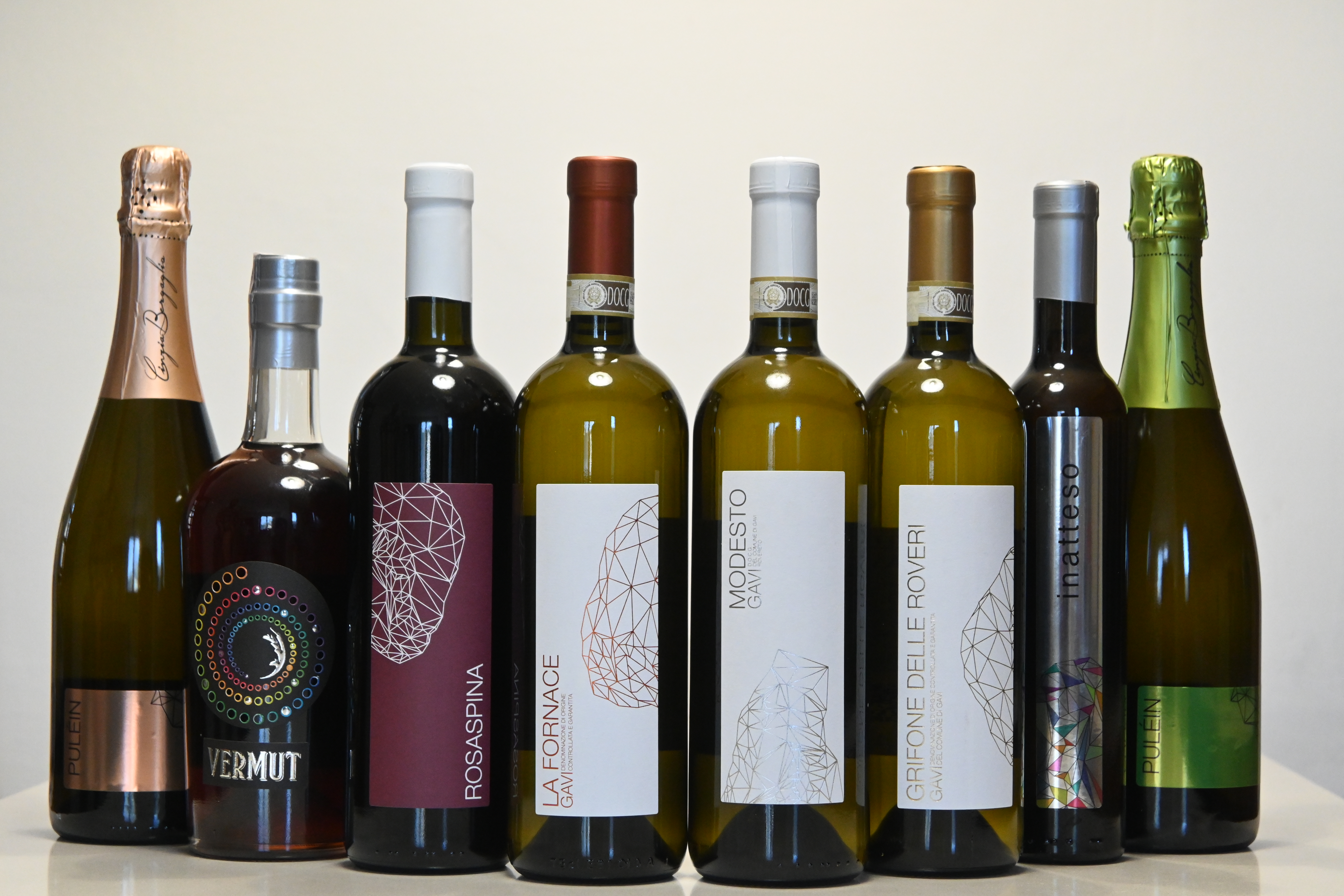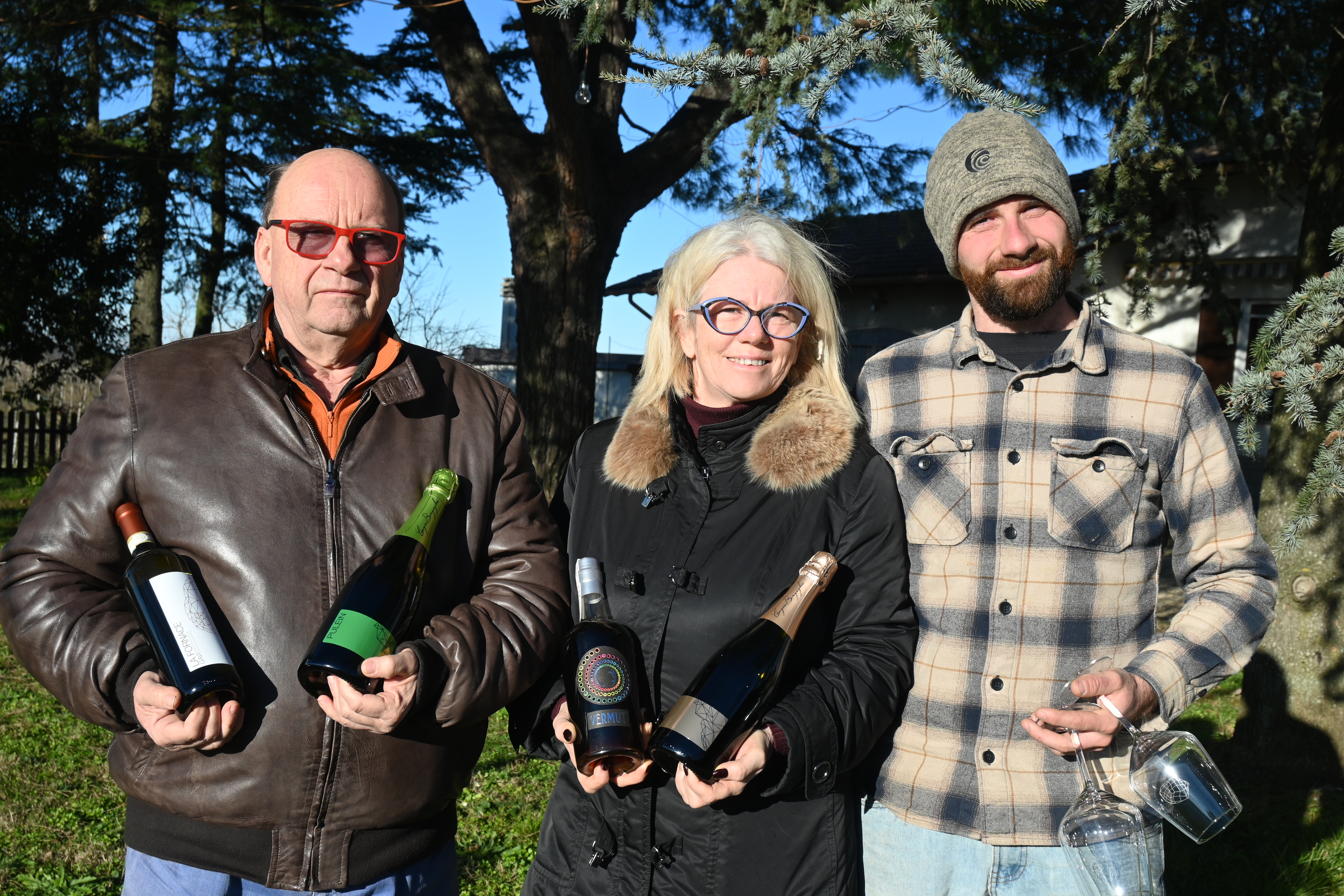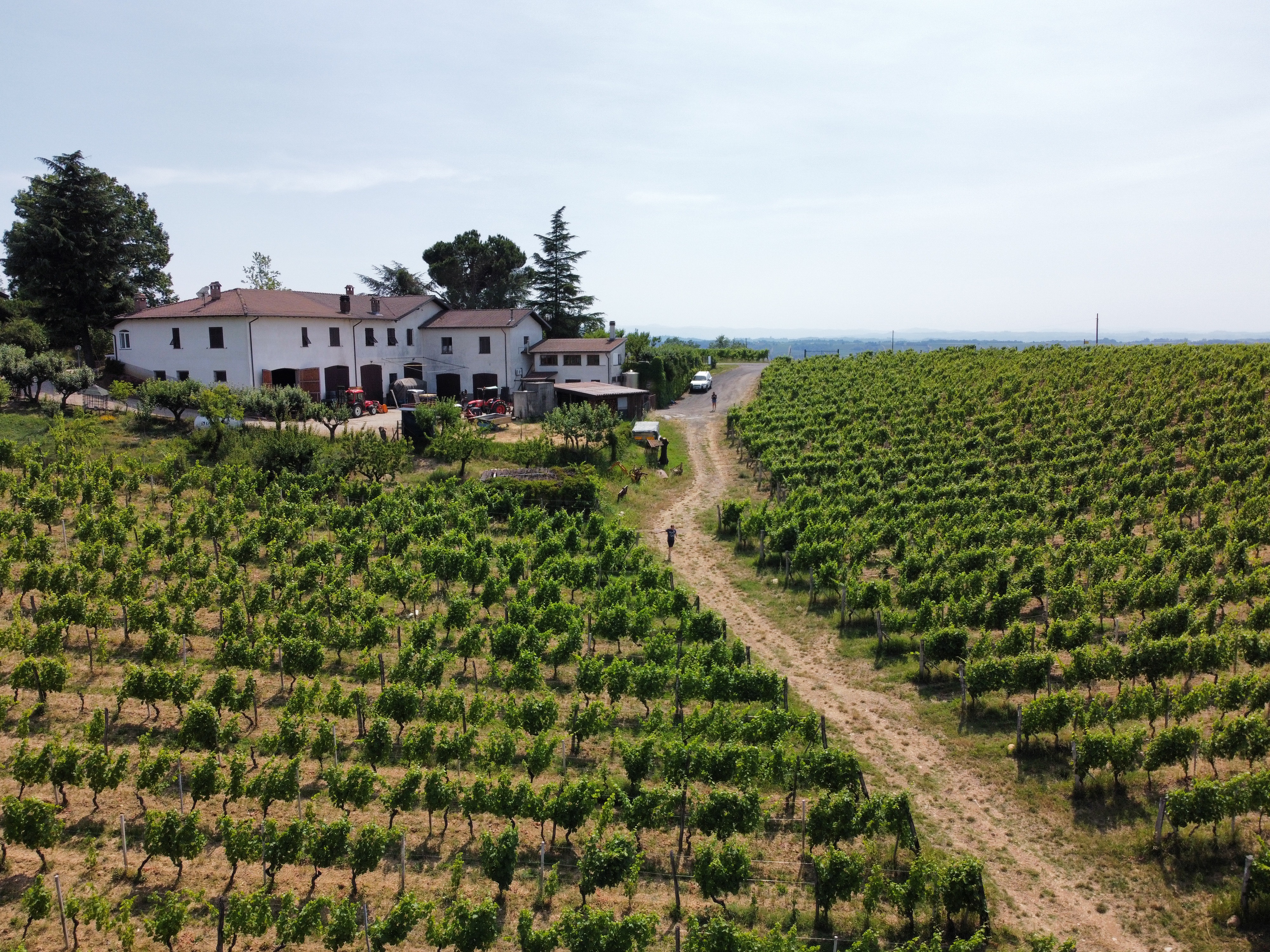Cinzia Bergaglio is the woman you expect when you know she has run a winery for at least twenty years, together with her husband Massimo and two small children to look after. Strong, concrete, determined: when you deal with the land, either the approach is direct or you don’t have the strength to continue. The territory certainly hasn’t helped. For some years the province of Alessandria, in particular the town of Gavi, has earned a privileged place among high-ranking wines, for the quality of its whites. And it is obvious that the competition between producers has raised the bar. Today Cinzia Bergaglio Vini has changed: the owner has become her son Mattia, the same one who grew up among the vineyards and breathed the smell of the must, while his sister Michela has preferred to find her own path with a degree in advanced biotechnology. We spoke with two generations of entrepreneurs, Cinzia and Mattia, to take a closer look at the evolution of a corporate vision that began in the early 2000s.
But how did you manage to keep everything together, family and work?
Mattia was born in 1993 and Michela in 1999. In 2002 one was 9 and the other 3. They contributed by having so much patience, by not having a timetable for eating, by not finding the soup ready or overcooked. At 10 years old they knew how to use the washing machine, the dryer, start the Bimbi, knead the pizza: each one did his own thing according to the degree of possibility. A lot of survival, because you can’t be everywhere. Mattia joined the company in recent years. There was a big change because we had to understand what he wanted to do, while Michela immediately had much clearer ideas: to graduate with a master’s degree in advanced biotechnology. Today Mattia is integrated and is the owner and feels the company is his. It is a great satisfaction for us to feel him so attached to the business, as if it were in his DNA. However, the transfer of the company from us parents to our son was really complicated: I think that if we had sold it would have been easier
Let’s start from 2002, how were you born?
From my husband’s work discontent, which was linked to my mother’s desire to obtain early retirement through a non-repayable loan by registering the company in my name, the incoming daughter. My parents produced and sold bulk wine to other bottling companies, by decision of my father who never wanted to bottle. My husband Massimo and I thought we could think about it ourselves. At that time, Gavi was not so highly rated and the bottle could allow you to reach the market with a sales line and with your price. In practice, we had various possibilities: you could get to the income from the sale of grapes, bulk wine or bottles. Furthermore, in 2002 it rained a lot and, instead of postponing the opening to the following year, we decided to start anyway, aiming at that part of the land where for us we could have the best quality of grapes, with a wine that reached 11.8% alcohol content. Let’s also take into account that 2003 was a very hot year, so much so that the first harvest in September brought unbalanced grapes, already dried on the vine. So the forecast was to sell a difficult year with the following one not being optimal: they were not easy moments. From 2004 to 2012, however, were beautiful years, almost a sort of compensation. The big turning point came when we met a very important English distributor who fell in love with our Gavi La Fornace wine (which takes its name from the area, editor’s note). From there we began to evolve with our hard core of enthusiasts. And we arrived in 2025 with some nice honors, some awards: for example, our wine entered the Espresso guide, reached the three glasses selection, present in the Italian wine guide! Our distributors from the Czech Republic bring it to their awards, obtaining the silver medal for La Fornace and first prize for Grifone delle Roveri with the gold medal! From these results an enviable economic security was born, which allowed us to face work with inner serenity and less apprehension. And in fact we arrived at the classic method, the bubbles, the tastings in the cellar.
Mattia: My entry is to continue an important activity and to bring innovation, given that I have the opportunity to interface with younger colleagues. But we are a very close-knit family that goes hand in hand in the company. I see it well in the future, if in the Gavi area we are all united. I trust in an improvement, because many of us are working on this topic.
As a company, you are located in an area suited to wine production, in particular Gavi, which represents an excellence of Piedmont. What type of wine do you produce?
The DOCG wine (Controlled and Guaranteed Designation of Origin, ed.) from the municipality of Gavi, actually a hamlet of Rovereto. If we wanted, we could compare it to a French crou (a term that indicates a particular vineyard that has grown in a certain area and from which a particularly excellent wine is obtained, ed.). Our vineyards are both in Tassarolo and Rovereto di Gavi. The Gavi DOCG is a Cortese grape variety that in the area includes eleven municipalities where the Cortese has its maximum expression. Our Modesto wine, which bears the name of my father, labeled in 2024, has been on its lees for two years and is a Gavi suitable for aging. Staying on the lees for two years softens it: the aroma softens its acidity, the main characteristic of Gavi. While La Fornace, our Gavi di Tassarolo, has a fruity, fresh, floral scent. It goes well from aperitif to lunch, from a glass in the afternoon to dinner: it is always great. Instead Il Grifone is the important wine because it undergoes batonage (traditional technique used during the fermentation or refinement of white wines in barrels editor’s note) on its yeasts and lees and gives it a much more pronounced persistence in the mouth compared to La Fornace.
To achieve quality, you have adopted a series of precautions and procedures that are attentive to the environment and pressing.
We have always paid specific attention to pruning. The Cortese vine is very prolific. Today we practice pruning that has seven to eight shoots, plus two of the spur. And we also do the green harvest (elimination of excess bunches before ripening, editor’s note) with eight, maximum ten bunches per plant. It is practiced in July, counting the bunches more or less and eliminating the excess ones, preferring those that are tangled and that do not allow air to circulate inside the plant. Because the breeze that favors the air and dries the morning dew is essential. On the front of attention to the environment, my son Mattia immediately eliminated the use of herbicides by switching to mechanical weeding that varies according to climate changes. We also tried the green manure technique, but we understood that the grass that we would have chopped serves the same purpose.
Mattia: Working the land less, in terms of consumption, has a smaller impact on our planet. In this sense, there are several projects in the pipeline, such as the installation of photovoltaic panels to ensure that all the cellar equipment can run on solar energy. And then the recovery of waste and the possible use of washing water. I am convinced that cooperation between municipalities can lead to excellent results because washing waste water can be conveyed to unique filtering systems and that water can be used by putting it into circulation cleaner.
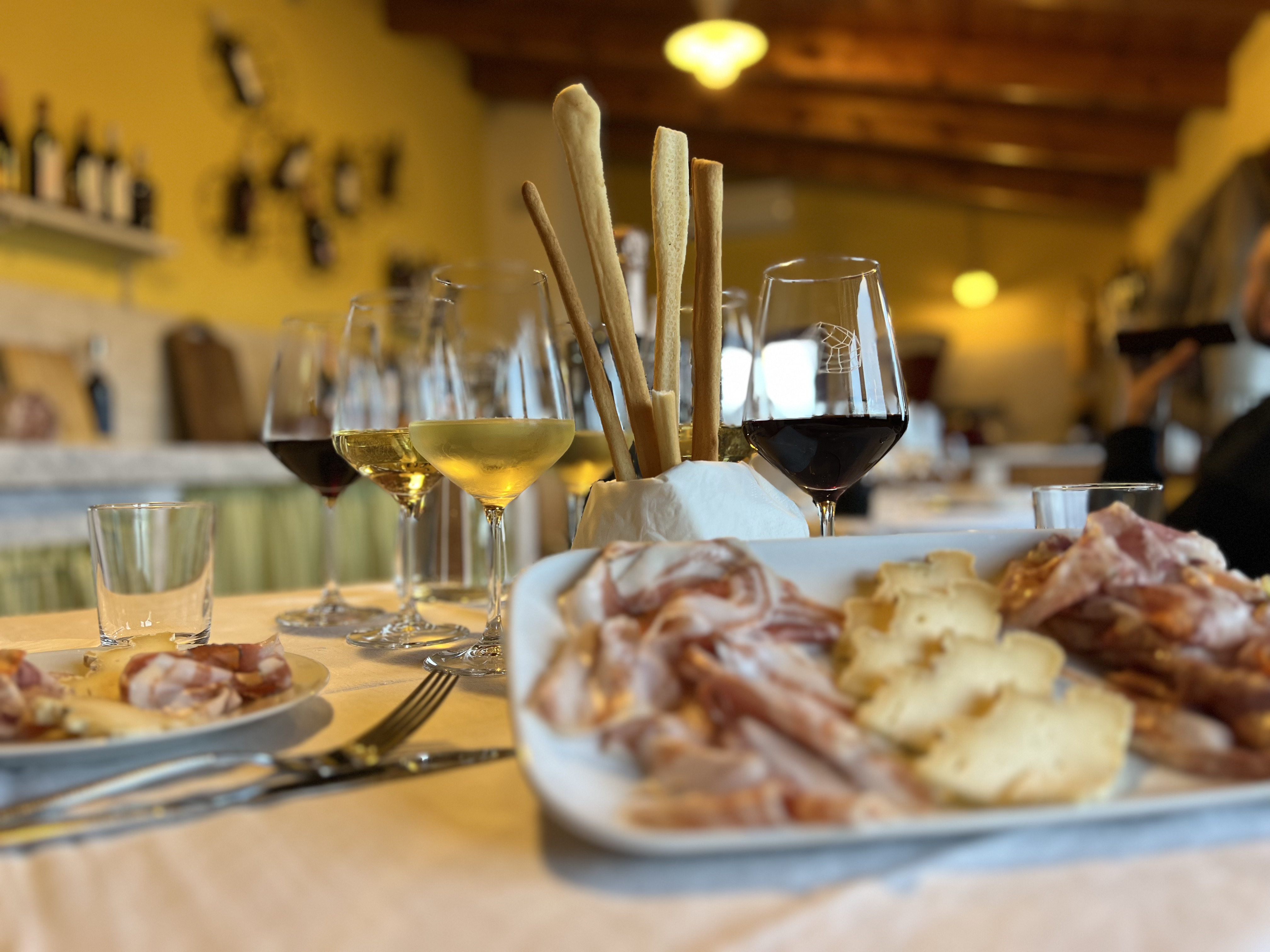
What is gentle pressing?
It means that the grapes do not have those strong pressings needed to bring the must home. Our pressing is soft, even my son divided this operation into two parts. When the grapes are brought home, they are tipped into the hopper (large grape collector) to be pressed: but the weight of the grapes itself makes the must fall! The result is the first flower that is put into a barrel, separately. The soft pressing of the white grapes allows the first liquid to be collected, the so-called flower wine, the noblest.
You chose to grow your vines on a calcareous, clayey soil, initially considered a problem and then transformed into an opportunity.
My father was interested in an area and a particular piece of land, where everyone else saw weeds and garbage. Before everything became reality, walking with my mother, he already imagined the vineyards and the house. When we planted our vineyard, how many stones emerged! In reality, the stone later proved to be fundamental because it gave the minerality to the wine. While the other area where we grow is more tuffaceous and therefore gives life to other aromas. These two very different productions needed packaging that would identify us and, luckily, we had the opportunity to meet Tamara Repetto, a world-class artist. Who was able to put together our history, through the stone and the grid that also represents the diamond, that is, the preciousness of the product. Her skill was to insert our hard work and our passion into the logo, symbolized by the stone.
In your work, therefore, attention also intervenes to capture what happens, such as an evolution of a possible different way of producing wine…
Of course. There is always something that can be improved. For example, today we harvest our classic method in crates. This means that the grapes are harvested in plastic crates, they are collected and stacked so that the grape is not crushed, taken to the cellar and emptied directly into the press, before we proceeded with the same process as Gavi. By changing we gave it a different, improving aroma.
You produce wine for every culinary pairing: from appetizers to desserts. There is also a Vermouth without the h…
Vermouth was born in 2020 with Covid, with the intent of saving that excess wine left in other companies. We approached Vermouth not for this reason, but because we have always been passionate about it. When they proposed making Vermouth with our Cortese, we welcomed the news with great enthusiasm.
I was very impressed by your tastings, which are also story, history, narration.
Usually we start from the vineyard and that’s where people get curious. Our tastings can last two hours, but also four: it depends on the number of questions people ask. Since I’m a person who loves the customer and likes to inform them, I go on for a long time. When my daughter saw that the stay in the vineyard was lasting longer than expected, she would raise a sign from afar that said stop!
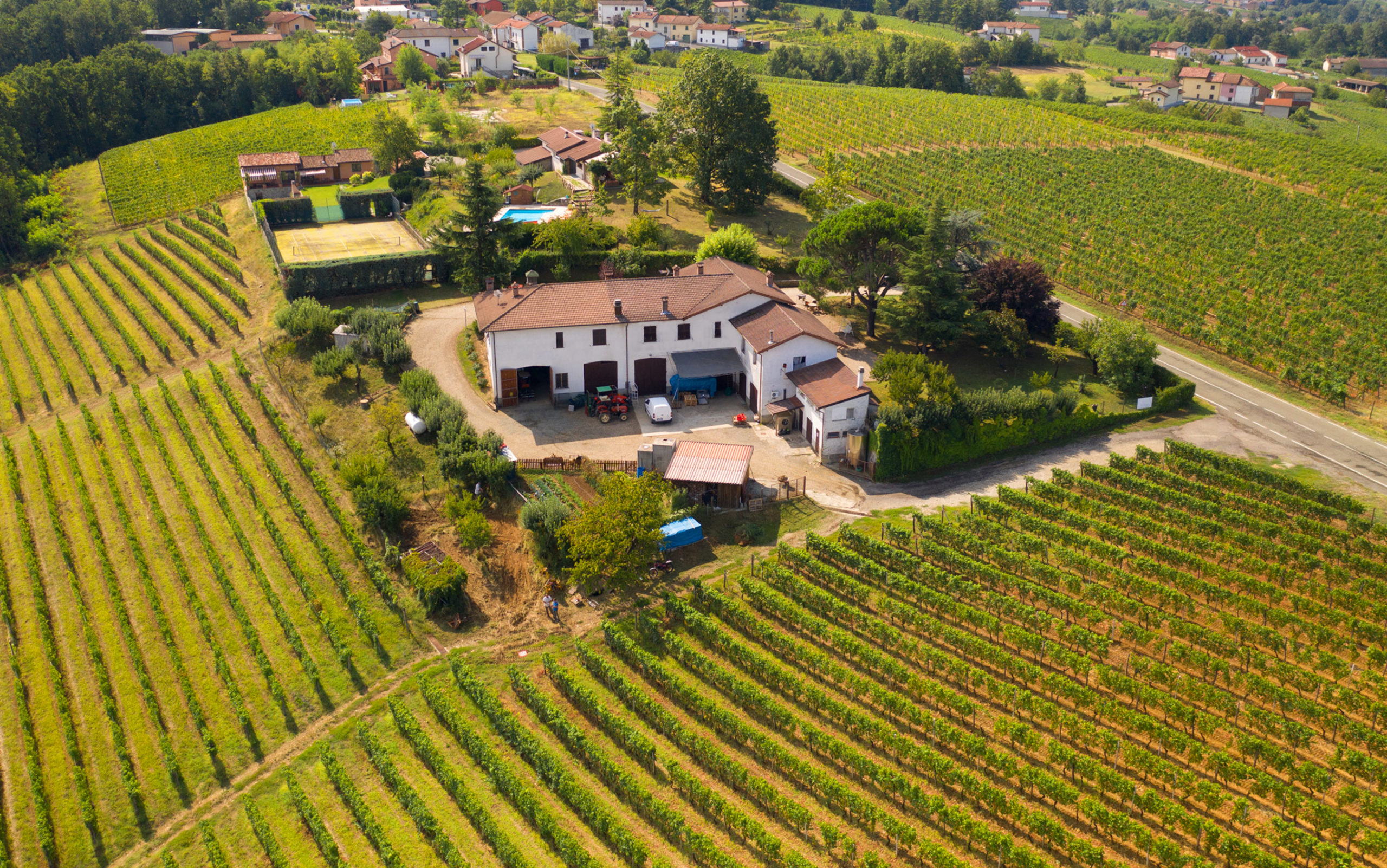
Today’s consumer is prepared, knows and informs himself, but he is also curious to understand when he comes face to face with the grapes, how they become wine.
Of course. Things that seem routine to us, for people translate into experience. It’s no coincidence that the goal of wine tourism is to sell emotions.
Mattia: Also because the information is more accessible and therefore people are more prepared.
Is climate change a concern for you?
Certainly, since it is the only employer from whom nothing can be asked. Perhaps we could plan a graft starting from the rootstocks, that is, from the small vine (cutting, layering or offshoot of the vine that has emitted the “beard”, that is, the roots, and which is used in the vineyard planting editor’s note). There are areas where it is possible to grow the rootstock ungrafted. In our area this is not possible because the plant would be subject to phylloxera. This type of problem has been solved with a graft with American vine. Who knows, maybe in the future a type of graft more resistant to drought or atmospheric agents will emerge.
Who are your customers?
People in the 35 to 55 age group. But young people and even children are starting to show up through educational activities such as the grape harvest. A moment in which the tourist lets himself go. Pressing the grapes with your feet, which we don’t normally use as a procedure, is one of the most significant moments: it is essential. Then, once the fun is over, we explain what really happens in the company. You go into the cellar, you taste three to five wines with pairings of local products. Twice a year we also manage to organize the Clandestino event linked to Vermouth. A drink list where we combine vermouth with the classic method in cocktails such as the Negroni or the Americano, but also Let Vermouth Be Sanctified! People book a table inside our company, sit next to strangers as well as friends and participate in evenings of joy and complicity. For us it is about getting a message across that is not tied to the mere production of wine, with the intention of showing our territory from another point of view. And it works, since it is the same people who, after a few months, remembering the beautiful evening spent, buy the wine that moved them.
What do you think about dealcoholized wine?
That it is not wine! You can’t call a drink wine that does not contain a percentage of alcohol. However, I believe that it is a product that we will get to in the years to come: since we keep talking about wine being bad for you, wine ages… In my opinion we should just be more careful about drinking.
Mattia: If I have to make the company survive, I will certainly accept dealcoholized wine. But if I have to think abstractly, I say that it is a senseless solution. If there is attention to wanting to drink wine without alcohol, I expect the world to have a very high perception of health. At the moment the processes for producing dealcoholized wine are complex and expensive. Above all, they consume a lot of energy and so I ask myself: where is the compromise? However, if people want to drink wine without alcohol just to drink, then I say very frankly that I prefer to grow cauliflowers!
Donal Cantonetti

